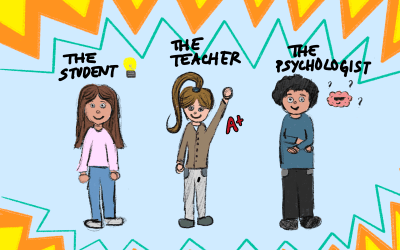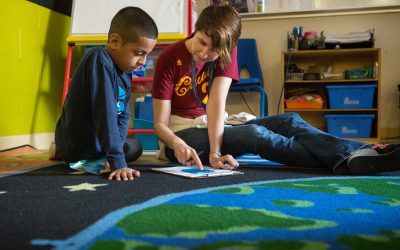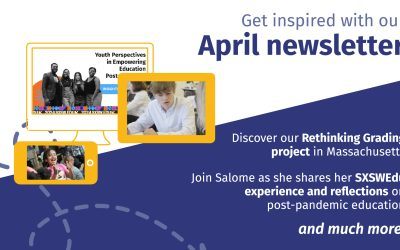My first competency-based project began in 1993, as part of the founding design team of a small, alternative public high school in New York City. Like so many design teams we were committed to developing a curriculum that was culturally relevant and student driven, emphasizing deep thinking in order to tackle challenging real-world issues.
Our students were from the Bronx, East Harlem, Washington Heights and Harlem, long before gentrification had edged north of Central Park. Few had ever left their neighborhoods, nor met students from other parts of the city. Most of our students had been retained once or twice and we considered their enrollment in our new school a testament to their resilience and willingness to take risks. They were creative, strategic in their thinking, able to evaluate situations and people with uncanny accuracy. They had a powerful sense of fairness and justice. They could advocate for themselves.
…AND, they had significant gaps in their toolbox of traditional academic skills and content knowledge: for most, their reading, writing, and math skill development had stalled in four or five years earlier. More importantly, their confidence in their self-efficacy had been shaken by repeated academic failure inside of classrooms where student agency was generally discouraged. Our students were highly skeptical of our claims that their voices mattered.
Our missing bridges: Significant barriers to college success
As a staff, we were unprepared for this potent mix of strengths and challenges. In fact, it took the better part of a very intense year for the full school community to come to love the project-based learning approach we had adopted, but eventually, students and their families were excited for opportunities to showcase their learning, demonstrate their growth, and support each other in successes and challenges.
As our school culture became stronger and more positive, we began to look “under the hood” with a more careful eye. What we found was profoundly disappointing: though the community loved the projects, and it was clear students were rapidly gaining confidence and expanding their background knowledge, literacy and numeracy data revealed that our academic needle was moving far too slowly for our students to be successfully prepared for college.
Twenty years later, there remain two questions at the heart of most of my projects:
| How can we design effective bridges to college and career for the most vulnerable of our underserved students: court-involved youth, high poverty students, English Language Learners, over-age students, and differently-abled students? How can our students successfully transition into a professional world that requires a set of complicated skills they have had little or no exposure to? |
Right now, the pathways literally don’t exist, except in a very, very few corners of the country, accessible to a tiny number of historically underserved students.
Unpacking the College Freshman Workload
Over the past two years, I have been lucky enough to work with colleagues at reDesign on a project exploring ways to answer this question. We began with a small study of the syllabi of the core courses required of freshmen, looking across a broad range of 2- and 4-year colleges. We were surprised to discover that freshman across the country are asked to undertake a remarkably similar set of projects, regardless of the school they attend:

In effect, the projects of college require students to be able to read widely, deeply and rapidly, while producing a high volume of sophisticated, analytic work, more or less on demand. This finding was a huge breakthrough for us, leading us to prototype a suite of open-source projects mapped directly from the rigors of the college freshman year. The following design features shaped the work:
- Tightly-align to the specific tasks required in the Freshman year of college, rather than to a generalized idea of college-readiness.
- Ensure content-neutrality. Content from any discipline can be layered into any of the tasks. This enables a chemistry teacher and a US History teacher could collaborate as they learn to organize a research paper with personalized, appropriate scaffolding for individual students.
- Enable use by students of any age or skill level. This allows for the development of a coherent, strategic roll-out of projects that can meet students where they are, provide them with just-in-time support, and allow them to move at their own pace.
- Organize around nested competency-based formative tasks that recur across multiple projects. For example, most good projects ask students to “Choose a Topic or Position,” “Identify Your Audience” and “Research.” Making these distinct formative tasks helps students understand that mastering this skill for 1 project will allow them to transfer the skill to their work on others. At the same time, teachers and students can assess students’ level of competency in using each of these specific, thinking skills.
- Formative Tasks must be both content-neutral and project-neutral. Educators from any grade and discipline should be able to adapt and use them as building blocks to create their own, prototype projects organized around supporting the development of established college and career skills.
The Suite of Performance Tasks are designed address all 4 learning strands of the Common Core Learning Standards, and allow teachers and students across disciplines to work on increasingly complex tasks and texts that include:
- The specific tasks that we know college freshmen undertake: Argumentative essays, research papers, problem-sets, lab reports, Presentations, Socratic Seminars
- Tasks that will build similar and complementary higher-order thinking skills: such as Debates, Infographics, Speeches, Photo Essays
- Tasks that support the development of skills to address the demands of rapidly analyzing and synthesizing a high volume of written content: e.g. reflective summaries & text annotation
Additional tools to support implementation:
- Our Set of Formative Tasks form the building blocks for the rapid design of new, high quality, project prototypes.
- An Assessment Pathway Design Tool and Exemplar support strategic planning around when to introduce students to project types, and when to provide students with additional opportunities to practice and demonstrate competency on each project and formative task.
- We are eager for feedback! Create a free login, explore, and let me know what you think.
ABOUT AUTHOR ANTONIA RUDENSTINE
Antonia is the Creative Director of reDesgin, LLC, an educational design shop committed to developing skills, understanding, projects, and products that increase the chances that historically marginalized students can thrive as learners, creators, contributors, and doers. Antonia currently thinks and writes about the design of strong competency-based learning systems, the need for white allies to support the radical diversification of the education sector, new models for curriculum development, and the opportunities and challenges of meaningful adult development in schools.
Join the community!
Sign up to receive our newsletter, access best-of educational resources, and stay in the know on upcoming events and learning opportunities. We hope to see you soon!




